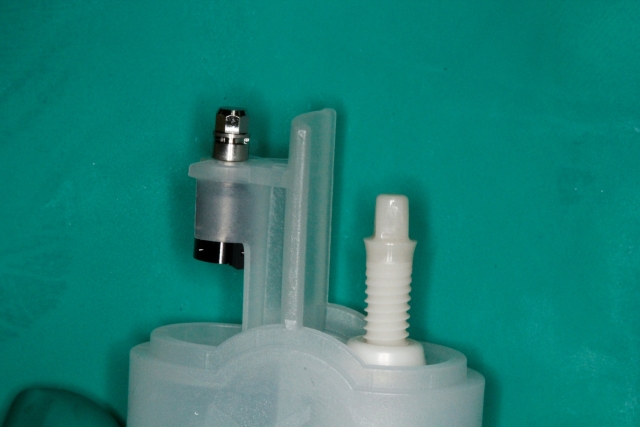Clinicians and researchers are always looking for new opportunities to improve existing treatment modalities. Whether it is better durability, higher levels of predictability, more cost effective treatments or more esthetic results, dentistry is constantly changing and evolving.
An interesting and sometimes controversial development is the all-ceramic one-piece implant for areas of high esthetic concern or in cases of titanium allergies. A number of manufacturers have developed zirconia implants, and all have reported success. A recent literature review by Hashim, et al showed an overall 92 percent survival rate at one year post-op.1 They suggest that zirconia implants may well be a useful alternative to titanium, and they also state that there is insufficient evidence of long-term outcomes or well-defined reasons for failure.
Zirconia implants are a more esthetic option in areas of thin tissue where implant “show-through” might be a problem, and the zirconia abutment is also more esthetic in many cases.
However, multiple manufacturers have been producing zirconia implants for several years. They appear to be gaining traction in mainstream implant care.
There are promising studies showing that zirconia integrates as well as titanium implants and that torque comparisons are similar. There is even a pre-clinical trial that hints that soft-tissue response might be better with zirconia implants.
Currently, one-piece implants and abutments are the only viable options on the market, and they are not without challenges. Because zirconia implants have the abutment as part of the structure, once the fixture is placed, there can be no alteration of the abutment portion with rotary instruments. Introducing those adjustments may result in micro-fractures of the crystalline structure and ultimately result in implant or abutment fracture and failure.
That in itself means that the placement of the one-piece zirconia implant is critical to success, and a guided surgical approach is suggested in order to optimize implant placement. The existing zirconia implants are largely tissue-level implants, also creating challenges in that they must be placed in a near perfect position to be restored optimally.
An all-ceramic implant case
The following case was submitted by Dr. Stefan Rohling from the University of Basel, Switzerland, as an illustration and case report of single zirconia implant.
Following a traumatic injury and fracture of the maxillary left central incisor, the patient desired a solution that was metal free.


The case was treatment planned for a single implant and the choice of fixture was a Straumann PURE zirconia implant.
The restorative advantage of this implant is that it can be treated very similarly to a titanium tissue-level implant, making the restorative process very easy.
A surgical guide was fabricated to give the surgeon the proposed incisal edge position of the final restoration. In this case, since there are adjacent teeth, the final cervical margin can be determined by the adjacent teeth. The surgeon must be able to visualize this position to be able to manage the final implant position. As mentioned, this is critical to restorative success since this is a one-piece system and the abutment portion cannot be altered.

The PURE implant is colored with an ivory shade so that it more closely resembles the hue and value of bone and lowers the chance of changing the value of the tissue over the implant.

After the osteotomy is complete, special position indicators are used to determine the final abutment height and position to allow any correction to the depth or direction of the osteotomy.

The implant can then be delivered. In this case, the old restoration was luted to the adjacent crown and used as an unloaded provisional until healing was complete.

After integration of the implant, it can be provisionalized and the soft tissue developed for final tissue contours. This can be done using a temporary abutment supplied by the manufacturer.


At about 12 weeks post-surgery, the soft tissue is ready for the final restoration. The restorative process is completed using familiar techniques for impressioning and restorative fabrication.


The final restoration shows excellent tissue response and an esthetic tissue result.

The benefit of an all-ceramic implant is apparent in this case: an excellent esthetic result with no show-through or color change in the tissue. The challenge in using this kind of an implant is in careful patient selection and in using very careful surgical placement.
(Click this link for more dentistry articles by Dr. Steve Ratcliff.)
Steve Ratcliff, D.D.S., M.S., Spear Faculty and Contributing Author
References
1. Hashim D, Cionca N, Courvoisier DS, Mombelli A. A systematic review of the clinical survival of zirconia implants. Clin Oral Investig. 2016 Sep;20(7):1403-17
